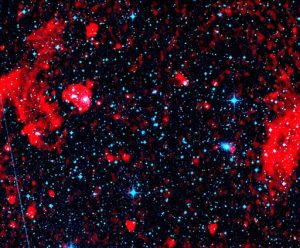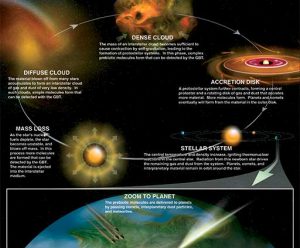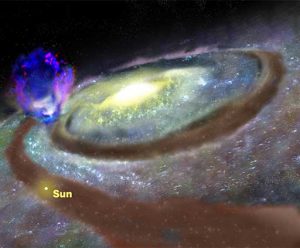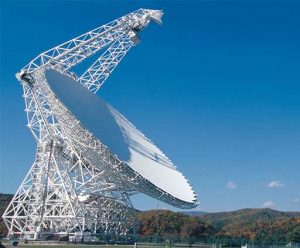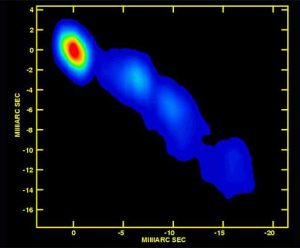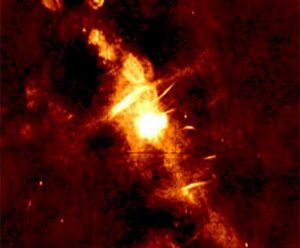Astronomers using the National Science Foundation’s Very Large Array radio telescope have discovered giant, ring-like structures around a cluster of galaxies.
GBT Hunts for Chemical Precursors to Life
In just two years of work, an international research team has discovered eight new complex, biologically-significant molecules in interstellar space using the National Science Foundation’s Robert C. Byrd Green Bank Telescope (GBT) in West Virginia.
Huge Superbubble of Gas Blowing Out of Milky Way
Astronomers using the National Science Foundation’s Green Bank Telescope have discovered a huge superbubble of hydrogen gas rising nearly 10,000 light-years above the plane of our Milky Way Galaxy.
Astronomers Gain Clues About Fundamental Physics
An international team of astronomers has looked at something very big — a distant galaxy — to study the behavior of things very small — atoms and molecules — to gain vital clues about the fundamental nature of our entire Universe.
VLBA Observations Put New Twist on Quasar Jet Model
When a pair of researchers aimed the National Science Foundation’s Very Long Baseline Array radio telescope toward a famous quasar, they sought evidence to support a popular theory for why the superfast jets of particles streaming from quasars are confined to narrow streams.
Astronomers Detect Powerful Bursting Radio Source
Astronomers at Sweet Briar College and the Naval Research Laboratory have detected a powerful new bursting radio source whose unique properties suggest the discovery of a new class of astronomical objects.






